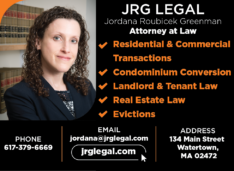How to Screen Tenants with Temporary Sources of Income
| . Posted in News - 2 Comments
By Kimberly Rau, MassLandlords writer
When you are considering potential tenants for your rental unit, income is an important consideration. After all, you want to make sure your renters can afford the rent. Massachusetts law is clear that you cannot deny a tenant because they receive Section 8 housing assistance. You should also be considering SNAP benefits (formerly known as food stamps) as income when calculating if someone can afford the rent. We are very careful to tell you that you should request proof of income, not wages, when vetting tenants.

Worried about how to calculate whether your tenant will be able to pay the rent for the entire term of the lease? We suggest factoring in temporary income sources in the context of a year’s lease.
Image License: Unsplash
What should you do, though, if an applicant meets your income requirements, but their income comes from unemployment benefits, temporary disability payments, or other forms of short-term income?
Many landlords want proof that their tenant has net income equaling three times the monthly rent. For example, a tenant looking to rent an apartment that costs $2,100 a month should be taking home $6,300 in some form of income.
Using that hypothetical $2,100-a-month apartment, imagine a scenario where Jason and Kevin apply to rent the place. Jason brings home $4,500 a month from his job. Kevin was laid off from his job and brings in $500 a week in unemployment benefits. Together, they bring in more than $6,500 a month, enough to afford the place. But what happens when Kevin’s unemployment benefits run out?
Massachusetts places a limit of 26 weeks on unemployment benefits in most situations (during Covid-19, pandemic-related federal extensions existed that gave recipients more time to receive unemployment benefits). That’s around six months. What then? There’s no guarantee that Kevin will find another job, but is it discriminatory to deny someone because their income comes from unemployment (or temporary disability, or other short-term income situations)?
In this case, we advise taking your “three times the rent” math equation and applying it to the entire term of the lease. In other words, instead of looking at monthly income (we’ll keep using our $6,300 example), consider what the annual take-home income should be for the duration of the lease (let’s say 12 months for this scenario). In doing so, you will see that the total cost of the lease ($2,100 x 12) is $25,200. Multiply that by three and you get a required take-home income of $75,600.
Back to Jason and Kevin. Jason brings home $4,500 a month, or $54,000 annually. Kevin brings home roughly $2,166 a month, but only has four months left before his unemployment benefits run out, or $8,664 in income. Therefore, if nothing changes, their forecasted income is $62,664, more than the cost of the lease, but less than the “three times” rule would allow. You could deny the lease if you felt uncertain that your potential tenants would be able to afford the lease once the unemployment income stream dries up.
If the potential tenant is receiving temporary disability benefits but has a job that they will be returning to, you will want to factor in their job income as well if you use this equation. You want to be considering earning potential and your potential tenant’s future; you also want to make sure you are cutting a generous amount of slack to avoid discrimination issues. Remember, you want a tenant who can pay the rent, but you don’t want to be so picky that you turn down perfectly appropriate renters based on potentially unfounded concerns.
Don’t be Discriminatory; Apply the Standard Evenly
This is only non-discriminatory if you apply your standard evenly to all applicants. Additionally, you must be familiar with the law. In other words, you must understand what the time limits are for things such as unemployment benefits (at the state and federal level) when doing your “year summation” math. Programs to help people experiencing homelessness such as HomeBASE may be good for up to a year. With changes to the RAFT program in light of the Covid pandemic, a tenant could have up to 15 months of “temporary income.” It’s important to know this before you accept or reject anyone based on numbers alone.
And, you must apply your standard evenly to all applicants. If you are doing a 12-month math equation for Kevin and Jason, you must also do it for John and Mary, even if Mary assures you up and down that she will have a new job before her benefits run out.
In the end, the entire purpose of tenant screening is to avoid nightmare situations where your tenants can’t afford the rent and you all end up in court. But ending up in court on discrimination charges isn’t what you want either. Our advice? Develop a business-relevant policy that’s fair and equitable. Put it in writing. Consult an attorney to make sure everything is above board, and then apply it evenly to all your applicants.




